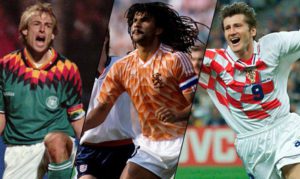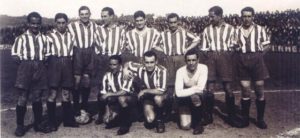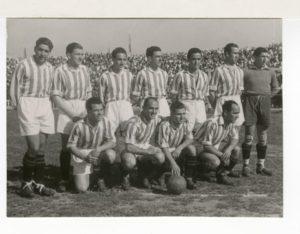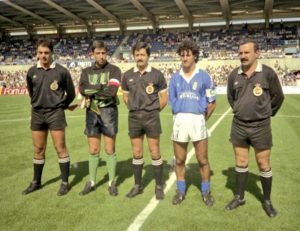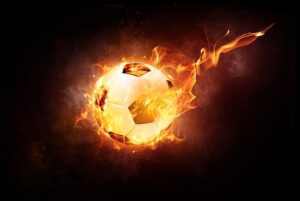Racing Club de Madrid, first victim of the football business
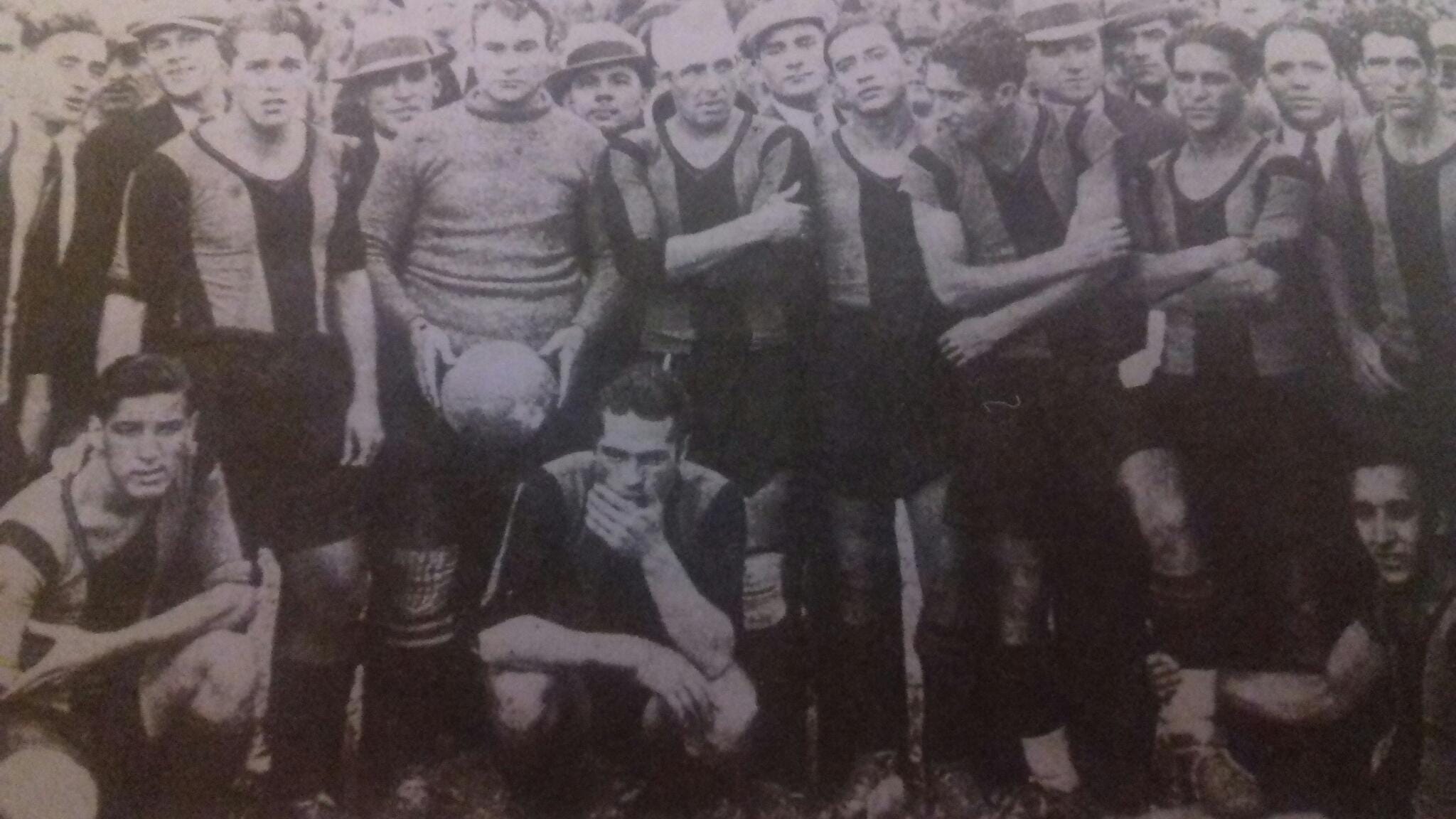
Last update November 22, 2019 by Javier Argudo
Football for many years has become business. Clubs try to make the best economic performance by selling products, television revenues and tours around the world. as we shall see, this is not new and already in years 30 the Racing de Madrid It was an example of how business can end football club.
The professionalization of the Spanish football, born in the late twenties and widespread among the top teams already in 1928, I brought tremendous economic problems for many of them. Sets as the Sporting Gijon one he Celta Vigo they were plunged into major crises as they could solventaron, in the case of the first with the management of the G.A.S. (Relief Group Sporting, made up of people of a certain economic capacity who donated money to the club).
In the capital of Spain the crisis mainly affected two of the three "big": al Atletico Madrid (then, Athletic Club de Madrid) y al Racing de Madrid, who they were torn between the disappearance and or continue to assume the financial risks of the "new football order". In the Atleti, Different models were sought for the survival of the club after relegation to the Second, one similar to the G.A.S. of Sporting, proposing in March 1928, that members who wished buy shares in the club amounting 100 pesetas. He did not work and only the intervention of the Federal Center and the arrival to the presidency of Rafael González Iglesias 1931, with the contribution of new blood and also an essential capital injection, He persuaded the club to continue living.
RACING CLUB AND REAL MADRID
It did not happen the same with the third professional club in the capital, the Racing de Madrid, which for a time it was the main rival of the Real Madrid, ahead even of colchoneros. With the creation of the Spanish League in season 1928-1929, the rojinegro club was engulfed in Group A of the Second Division. Club neighborhood Chamberí (although its new and final camp was located in Vallecas) He made a bet all or nothing. Only the First Division was profitable so that survival was passing through the rise and, for it, He joined big-name players.
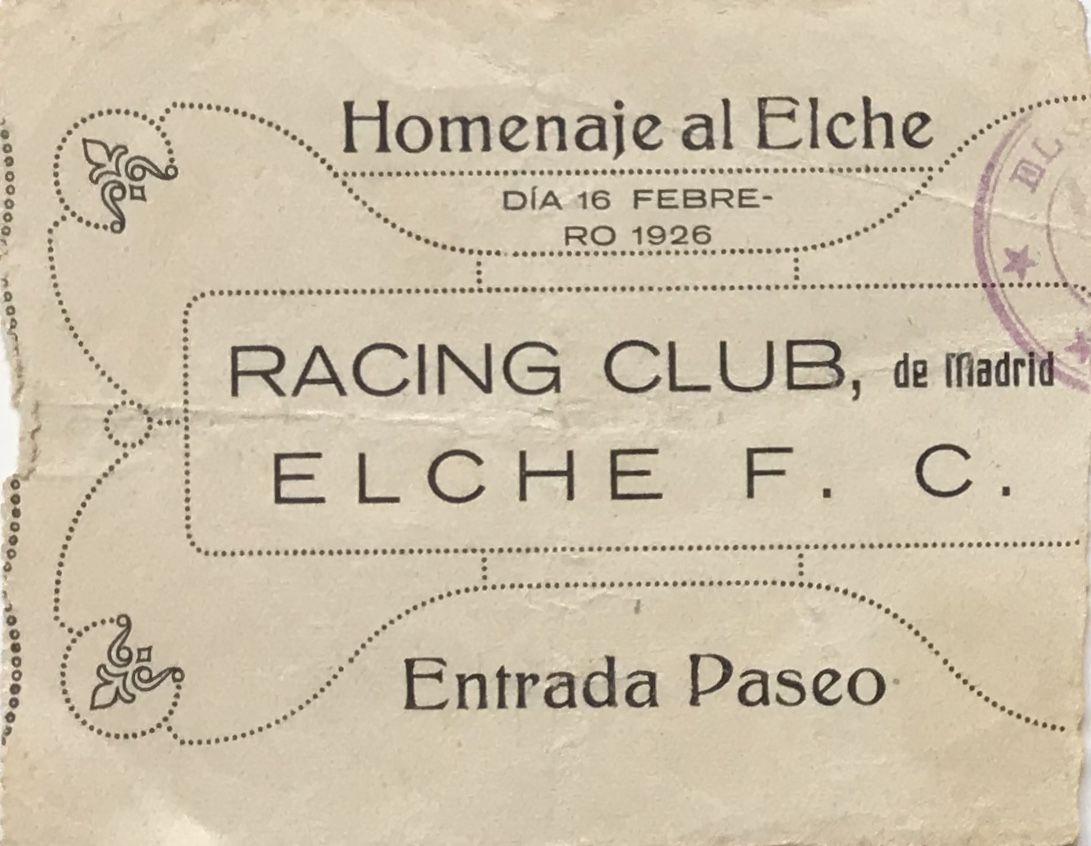
He joined the Padrón and Oramas canaries, Escobal and Felix, both from the Real Madrid and the Basque striker Poli. A command of the team would be the prestigious coach Francisco Bru, Spanish first coach and had reaped the successful silver medal in the Antwerp Olympics 1920. But in football names not win games by themselves and Racing de Madrid finished, tenth and bottom side of the group A, winning six games, drawing one and losing eleven.
The following season was a restructuring of the categories of Spanish football and Racing would happen to the Third Division, professional category of national and not territorial, so supposed increase, even more, economic ruin in which the club was plunged Chamberí. Like many teams, She maintained its professional structure, but he resigned to play in the third category of Spanish football, making in regional. further, embarked, in 1930, in building a new stadium in a strange neighborhood on its social mass, El Puente de Vallecas.
THE AMERICAN TOUR
In 1931 the team's debt exceeded the 800.000 pesetas and timely solution to finding the viability seemed more complicated. For it, the directors of the club, It occurred to make them an American tour to "do box", agreeing to take a percentage of the money raised in each of the meetings I would dispute. The assembly would be strengthened Chamberí, also, by big-name players; as the star recently signed to the club rojinegro, Hungarian international goalkeeper Platko, in addition to the transfer of a player of Real Sociedad, Cholín, and another contribution of the Real Madrid (it would join the tour in Mexico without permission from the club merengue), Gaspar Rubio.
The tour was organized by self Francisco Bru and he led the Madrid team for Peru, Cuba, Mexico and the United States. Nothing turned out as had been planned. Peru were played in four games, winning three and losing one, but with much less public than expected in all matches held. In Cuba they were met with hostility by the public from rival teams that clashed, besides being deceived by one of the clubs that did not pay them anything of what they had agreed in the contract and suspended the final game of the three who had agreed. In Mexico it was even worse. Players, to not having received what was agreed in Cuba, just they had to survive and requested aid Spanish Football Federation to be repatriated. Response received a "no".
further, in the meetings held there was a real "hunting the Spanish", being particularly violent encounter played against Atlante, where the public, watching his team lose jumped into the field to attack the Spanish players, resulting critically injured, with a stone in the head, Real Madrid player team Gaspar Rubio, he had to be hospitalized. The incomprehensible delay in police intervention worsened the situation for the Spaniards who ended, In its whole, attacked incomprehensibly, by a crowd angered by the defeat of his team (then the Mexicans trailed 1 a 3), a meeting in which, in purely sporting, There had not been a single fault unusual, nor any violent action.
RETURNING TO SPAIN AND DISAPPEARANCE
And if that was not enough, Mexican club, he dissociated himself completely from the agreed payment and Madrid moved to the United States, once again, scalded and scammed. There, in NY, and abandoned by their directors, without achieving the goal of raising money, They played their last meeting, organized by Juan Lopez, an emigrant from Spanish origin, disreputable and murdered, even when all Madrid was in the city, after having played their last meeting in the US city. Players were left to their fate, abandoned and asked for help to Federation Center, what, becoming aware of the situation, He sent the tickets for the return of the expedition in the transatlantic Buenos Aires, out of the city neoyorkina 11 November 1931 and arriving in Spain two weeks later. Before, some players were able to return for help to their families: Brunette, Valderrama Y Félix.
Federation Center, logically, he claimed, later, the money spent on tickets back to the team Chamberí, In addition fining the club Disorganized and failed tour. He could not take over such debts and the same 1931 disappeared Racing de Madrid, after seventeen years of history (It was founded in 1914) and two championship titles in the Region Center.

